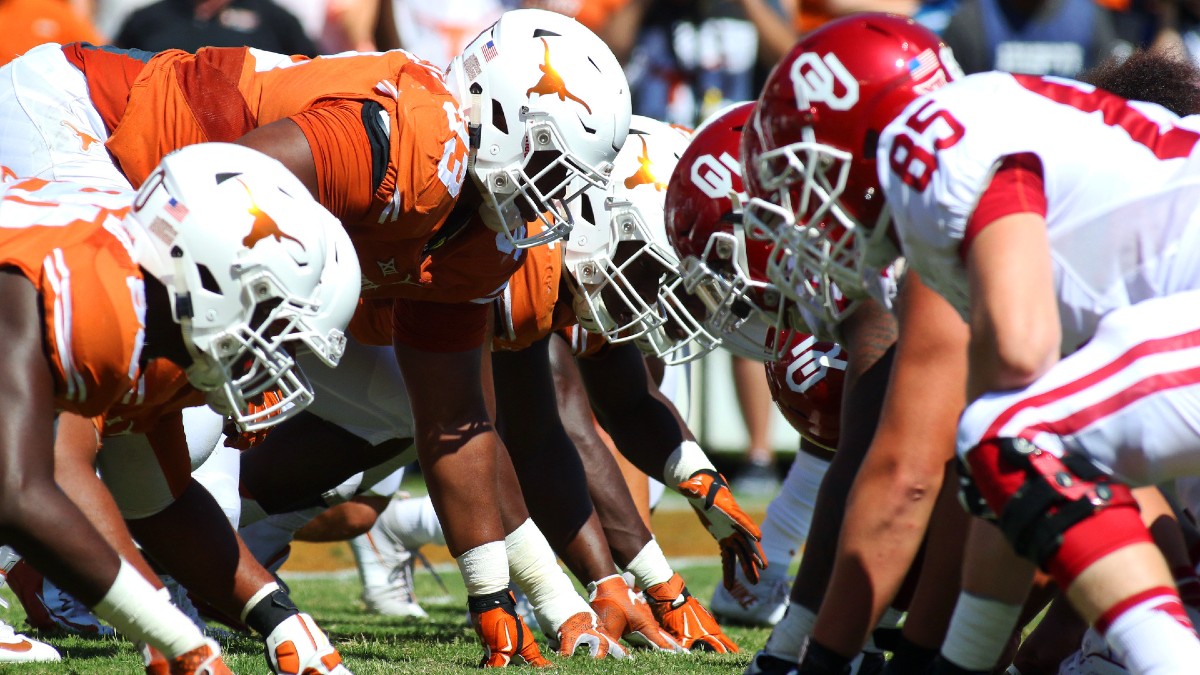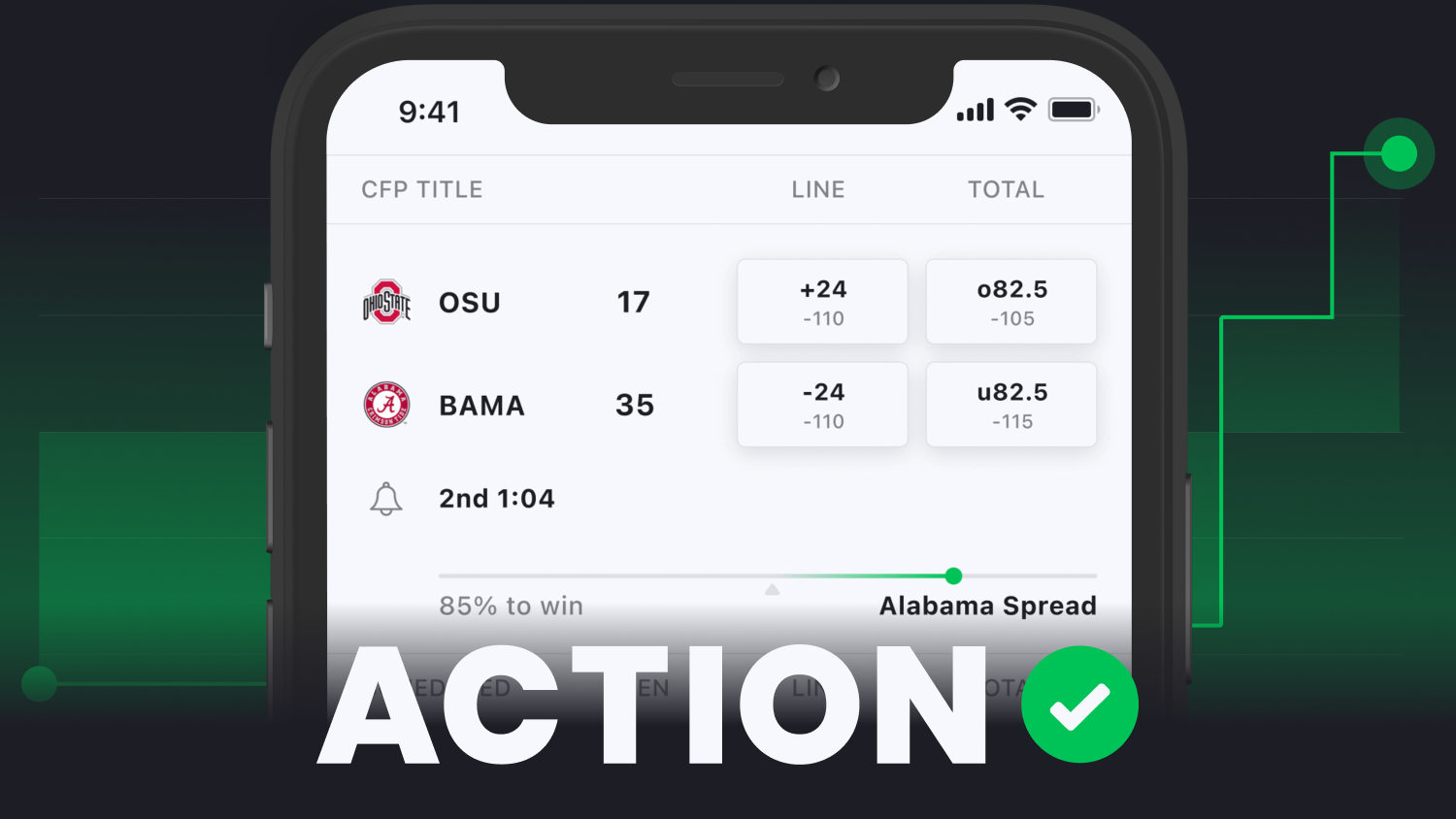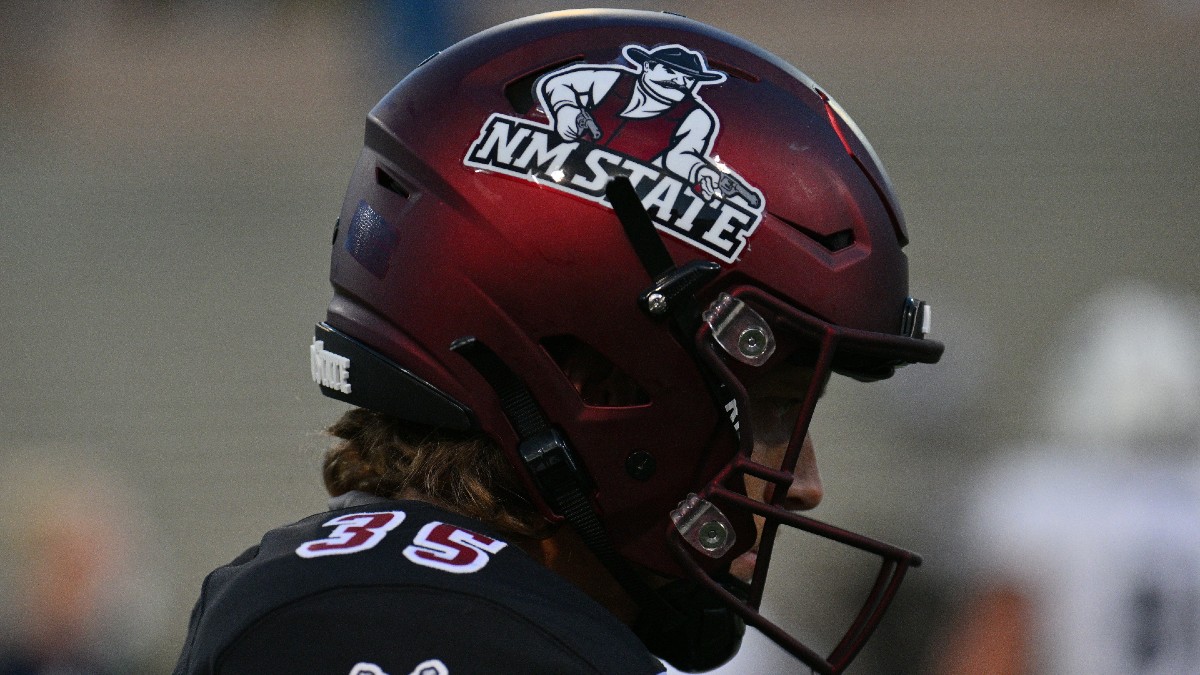There is “growing sentiment” and “momentum” for Oklahoma and Texas to leave the Big 12 a year early and join the SEC in 2024, industry sources told Action Network.
The Big 12’s current Grant of Rights expires July 1, 2025. Oklahoma and Texas have indicated they are committed to remaining in the Big 12 until then before moving to the SEC for the 2025 season. However, that timetable has since been accelerated and could even get completed by next month, sources said.
There remain many obstacles for an early move, but one source said the “climate is right” for the Sooners and Longhorns to exit the Big 12 after the 2023 season and begin play in the SEC in 2024.
“There’s a lot of moving parts, but there is the desire on many fronts for this to get done,” an industry source said.
Sources indicated several factors why the likelihood of an early move for OU and Texas has increased:
- The Big Ten grows to 16 teams with the addition of USC and UCLA in 2024, coinciding with the first year of the College Football Playoff’s expansion to 12 teams.
- The Big 12 decided to add four teams in 2023 — even before OU and UT remained in the league.
- The Big 12 securing its new media rights deal.
Privately, Oklahoma and Texas were never in favor of adding new Big 12 members while they remained in the league, sources said.
While both schools have publicly said they would remain through the Big 12’s current Grant of Rights, it's no secret that OU and Texas want out early and the SEC also would prefer to add the schools in 2024, sources said.
“There have been ongoing discussions to find a way for Texas and OU to leave early without costing (the Big 12) any money,” an industry source said. “However, everyone has to be made whole.”
How everyone is “made whole” is the biggest sticking point for all parties.
Big 12 bylaws require Oklahoma and Texas to pay an exit fee the sum of the league’s distribution for two years — which is about $84 million per school, sources said. Historically, when a school leaves a conference, that exit fee is negotiated down to about 60%, meaning OU and Texas could possibly get out for about $50 million each.
OU, Texas and the Big 12 have been involved in discussions for months but still have not reached a final agreement on the schools' buyout amount, sources said.
And then there's the SEC. In 2020, the SEC signed a 10-year media rights deal with ESPN worth around $300 million. The deal starts in 2024 and includes a pro rata clause requiring ESPN to pay the SEC the same amount per school for any new members, sources said.
This is where it gets complicated, sources said, and raises several questions.
How eager is ESPN to pay that increased amount to the SEC in 2024 instead of waiting until 2025? If OU and Texas join the SEC early, that could decrease the value of the Big 12’s final year of its current media rights with ESPN and FOX, which the Big 12 would oppose.
Would ESPN be willing to offset those smaller numbers to the Big 12 and also pay more to the SEC? Would OU and Texas agree to pay more than the expected $50 million buyout to get out early? Would — or even could — OU and Texas schedule nonconference road games at Big 12 teams in 2024 to help offset the decrease in the media rights for that year?
“The Big 12 would like it to happen a year early, the SEC would like OU and Texas a year early, but FOX could care less and I’m not sure what ESPN will do,” an industry source said.
Added another source: “ESPN has all the keys to the castle for this to happen.”
Regardless of whether or not OU and Texas leave the Big 12 early, it will not impact the Big 12’s new Grant of Rights and media deals with ESPN and FOX, starting in 2025. That six-year, $2.3 billion deal runs through 2030.
Next season, the Big 12 will have 14 members with the addition of BYU, Cincinnati, Houston and UCF.
In 2024 — the first year of the new 12-team College Football Playoff — the Big Ten will have 16 schools (adding USC and UCLA), the SEC will either have 14 or 16 schools (depending on if OU and Texas join early) and the Big 12 will either have 12 of 14 schools (depending on if OU and Texas leave early).
Meanwhile, the ACC will have 14 schools, and the Pac-12 will have 10 schools unless it replaces USC and UCLA to get back to 12 members.




















































